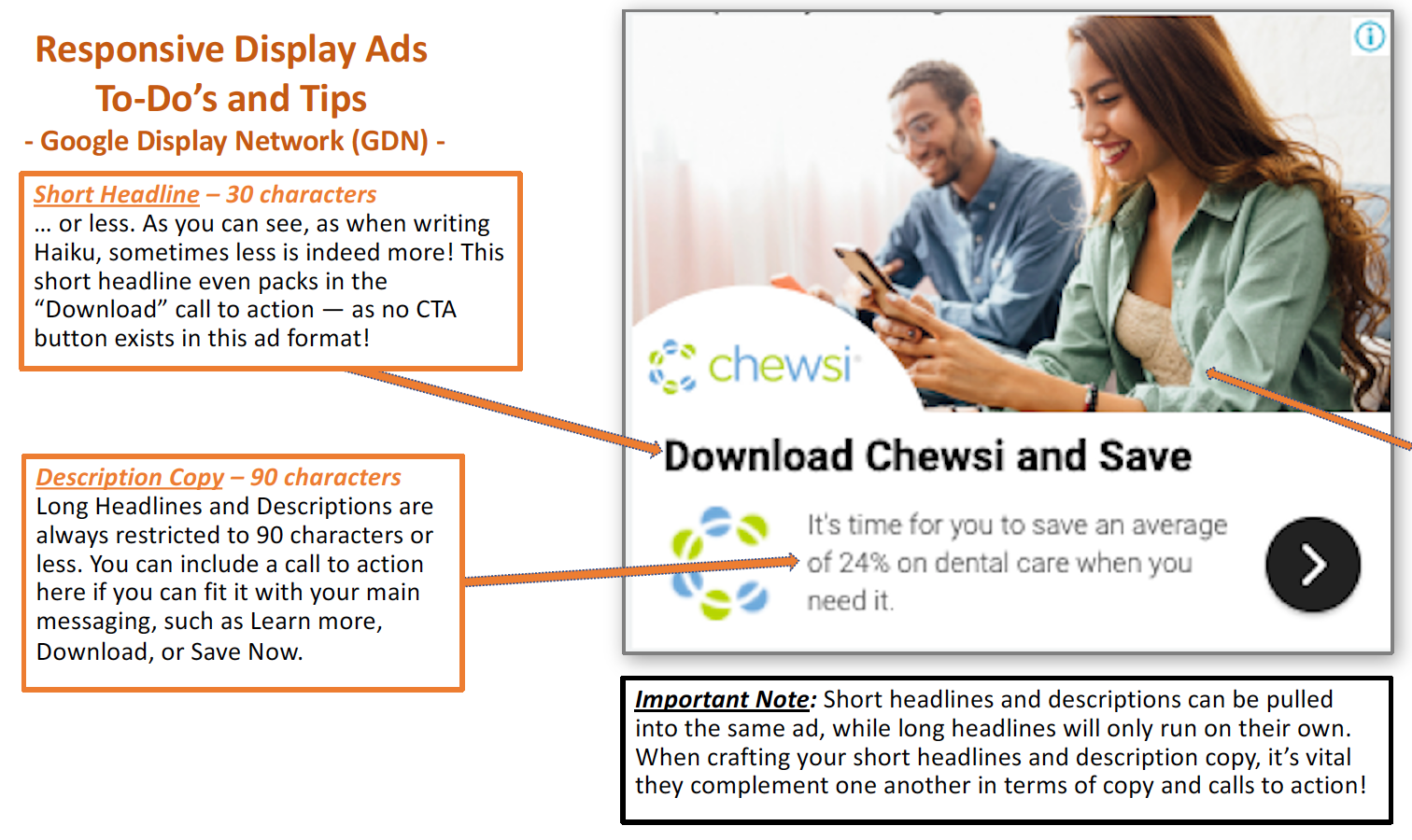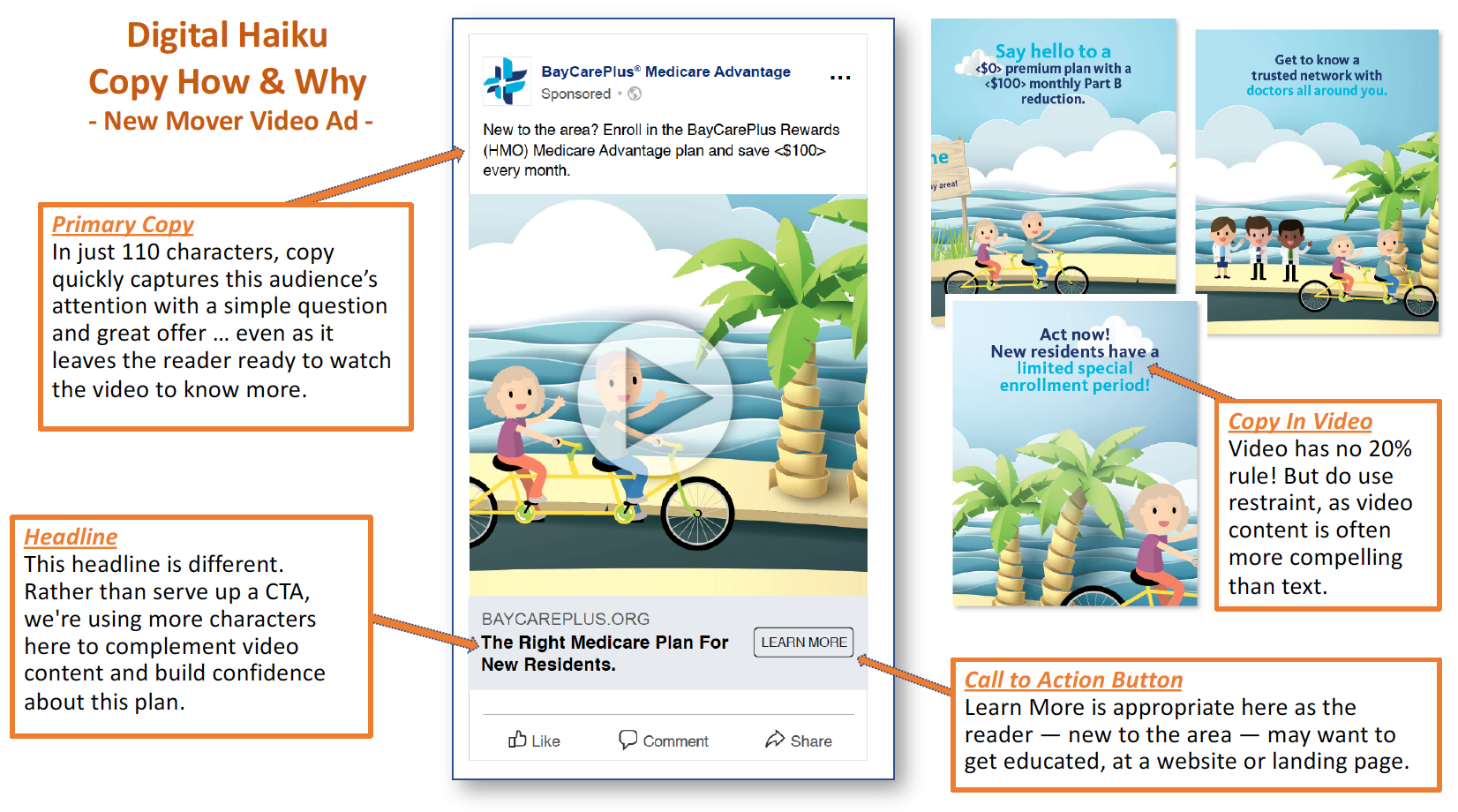The poetry of a digital ad
Jen Stercula Creative That Sells, Digital Direct Marketing, Insurance Direct Marketing, Response Marketing, Trends and POVAhhh—poetry. Bet you haven’t thought about it in any serious way since 8th grade English. I can hear the groans now. But as a student, I was the weirdo that (secretly) got excited when we had a poetry assignment. Why?
Poems are like puzzles. I don’t do number puzzles; I’m just not wired that way. But puzzles with words are a different story. Sure, there are free-verse poems with no rules at all, but many poems — limericks, sonnets, villanelles, and sestinas (Google that last one if you ever want your brain to melt) — are all based on very specific sets of rules. Words per line, lines per poem, syllable counts, and more.
(This all has a very real and practical impact on improving your digital direct marketing, I promise).
Take haiku, a form of poetry that originated in Japan in the 17th century. The writer is restricted to 5 syllables in the first line, 7 in the second line, and 5 in the last line.
When the fog is good, (5)
you can start to disappear. (7)
Happiness is gloom. (5)
Digital ads are like the haikus of direct marketing. Small in size, equipped with character restrictions, limits, and calls to action. Each word in a digital ad is important because the intent is not only to make you think, but to get your attention and get you to do something, like click, learn, or download. Quite noble for such a small piece of media.
Some copywriters find writing digital ads to be a nuisance task with all those rules, but I love writing them. There is beauty in the boundaries.
Let’s look at Google responsive ads:

You see that in responsive display ads, there are a number of headline restrictions. If you don’t obey these character restrictions, this ad breaks the rules and won’t run. You’re definitely getting an F for technique, but more importantly you’re negatively affecting the outcome of your digital campaign.

Also, consider the messaging used in your digital ad. Like a haiku, you have a much smaller space to get your message across. With Google responsive ads, either the description or the long headline is shown in the ad, not both. So, you need to consider adding a call to action in one or both (as shown above) to ensure that the user will know what you want them to do.
Here is another example or two – looking at Facebook ads:

Though the copy in the space above your photo isn’t a restriction as much as a suggested limit, you’ll still want to keep your important messaging up front and keep the copy short, so you don’t lose your audience to long text that truncates (gets cut off), essentially cutting off your main message.

Unlike poetry, most digital ads require the use of a photo. Poems require words to paint a picture, so you’re getting off a bit easier here. A photo does some of the heavy lifting that longer copy would normally do in a different type of media.
Your header should bolster or include the call to action in words to set up your CTA button, as your button options are restricted to a list of 17 or so on Facebook.
Here are 3 quick pointers for writing a poetic digital ad:
1 — Embrace the boundaries. Learn to love those limits. That is the essence of a good poem and a great digital ad. Once you understand what your most important messaging is in the simplest of terms, you might see that you didn’t need all of that fluff to begin with.
2 — Emphasize what you need to say up front. If you have an offer, a promo, or you just want someone to do something like call, go online, or download, you should try to fit that messaging up front in your copy. If it truncates due to character count at least your CTA or top product benefit is preserved.
3 — Write with impact. You can’t really go the long way around the barn with your word choice. Use short, impactful words to get your ideas across in a small space.
For a headline you could say “Learn More about Foggy Day Umbrellas!” or you could spice it up a little “Foggy Day Umbrellas keep you dry!” and use Learn More as your CTA.
See how well you’re doing? Who says you’re not a poet? And you’re getting the hang of these digital ads, too. Pat your 8th grade self on the back!
At DMW, we love a carefully crafted marketing campaign. It could be small, or it could have many moving parts, but if it meets or exceeds the results you need, it’s poetry in motion. Get in touch today and put our expertise to work for you.